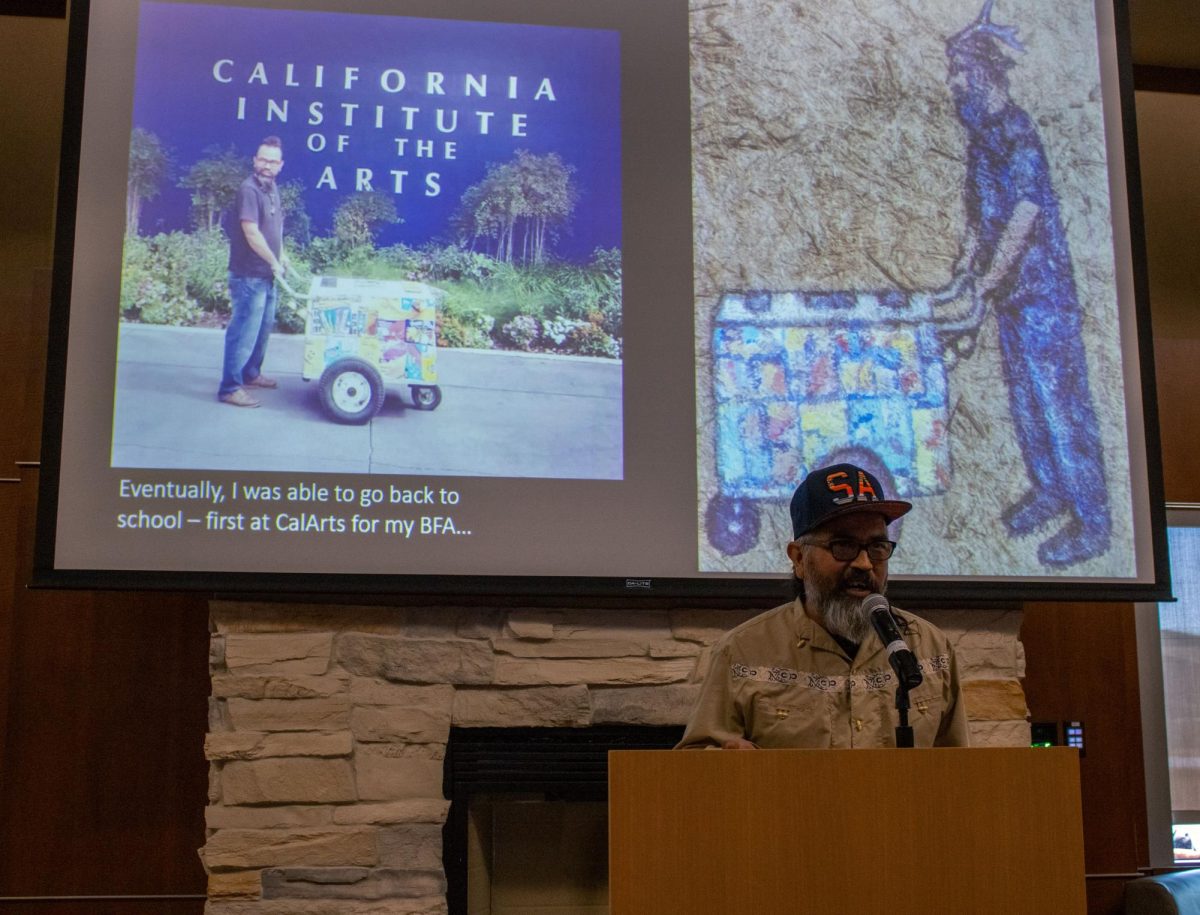On Tuesday, March 18, students, faculty, and community members gathered at the University Library’s Fifth Floor Reading Room for a compelling lecture by artist Isidro Pérez García.
He began the lecture by sharing his personal experiences, detailing his journey as a formerly undocumented migrant and his transition from working in a furniture making factory to becoming a full-time artist. Having lived undocumented in the U.S. for over twenty years before obtaining residency, he emphasized the challenges and resilience that shaped his artistic practice. His story provided a deeply personal context for understanding his work and its connection to themes of migration, ancestral knowledge, and land.
García guided the audience through his various art pieces, explaining the significance of each. His latest exhibition, Migratory Land Knowledges, explores the interconnectedness of land beyond political or geographical boundaries. He discussed his artistic practice, which draws upon using natural resources and ancestral techniques to challenge the limitations imposed by contemporary border formations.
During the lecture, Pérez García emphasized the importance of materials sourced directly from Southern California, such as maguey plants from Santa Ana, tule from Newport, and cochinilla from Riverside. These elements, found on both sides of the U.S.-Mexico border, symbolize the endurance of shared knowledge despite geopolitics. His artistic process reflects a deep engagement with the land and its historical significance, showcasing how traditional methods persist in contemporary artistic expression.
The event also highlighted the collections featured in the exhibition, including Grabé en la Penca del Maguey / Carved en la Penca del Maguey, Spiral Table with Sacrificial Hearts / Corazones Chuecos / Unbricks, and Tuleño Codex. These works further emphasize García’s exploration of identity, memory, and migration through material and artistic practice.
In addition to the lecture, attendees were invited to participate in an upcoming workshop on March 27 at The Makery, located on the University Library’s 2nd Floor. This hands-on experience will allow students to learn the traditional process of harvesting and painting with cochinilla, replicating the techniques used in Migratory Land Knowledges. The workshop, free for CSUSM students, offers a unique opportunity to engage directly with the artist’s materials and methods, though space is limited to 15 participants.
Through Migratory Land Knowledges, García challenges the boundaries of identity, citizenship, and cultural memory. His work invites audiences to reflect on the enduring relationship between people and land, encouraging a deeper understanding of the migration journey. The lecture served as both an intellectual and artistic journey, reinforcing the power of art as a vessel for preserving and reimagining knowledge across borders.



